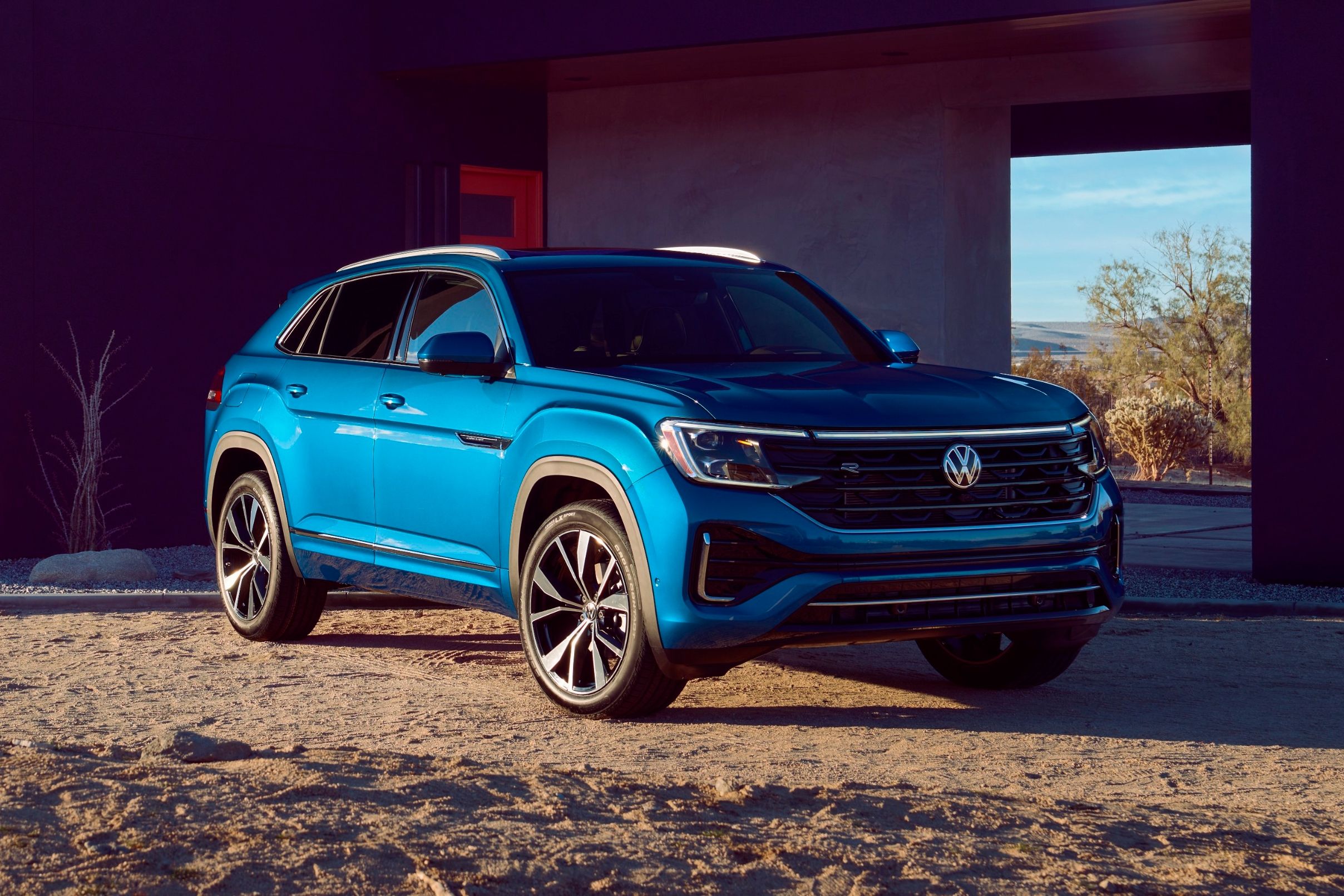
The Volkswagen Touareg was possibly the best SUV ever built, seeing as it spawned the Audi Q7, Porsche Cayenne, Bentley Bentayga, and even the Lamborghini Urus. Although the car was completely overengineered for greatness, American consumers never got over its high price and adjoining VW badge, and sales suffered. That is why Volkswagen introduced a new and more US-friendly SUV called the Atlas with a much lower base price and a useful third row.
The Atlas proved to be a huge success, so it warranted a smaller, sportier version. Much like the Honda Passport is to the Pilot, the 2021 Volkswagen Atlas Cross Sport is essentially an Atlas with only two rows and different styling. It features a coupe-like rear end, like a BMW X6, but on a much more reasonable budget. After spending a week driving the Atlas Cross Sport, we think VW managed to get the SUV coupe formula right; but we don't love everything about it.
Love: Coupe-Like Styling Done Right
To say we are detractors of the SUV coupe movement would be an understatement. Why pay more for a BMW X6 when an X5 offers the same performance, more practicality, better visibility, and (to our eyes) prettier styling for less cash? But the Atlas Cross Sport is one of the few SUV coupe models we enjoy looking at. Like its more expensive family member, the Audi Q8, the Cross Sport doesn't go overboard with the rear styling, yielding a vehicle that looks handsome from all angles.
There are a ton of different wheel options depending on the trim, but we think the 20-inch dark grey alloys on our SE with Technology R-Line tester look best. There a few silly design elements, like the fake exhaust cutouts in the rear bumper, but they don't detract too much from the overall style.
Hate: Interior Is Plain
While the exterior is bold and aggressive, the cabin is plain and Germanic. Upper trim levels gain access to more interesting interior colors like Dark Burgundy and Cinnamon Brown, but our tester arrived with dark and dismal Titan Black V-Tex leatherette seating. There's a bit of grey leatherette on the doors and some sporty silver trim on the dash, but overall, the cabin feels underdesigned compared to the exterior.
We found the materials choices to be a mixed bag as well. Some items, like the perforated steering wheel and soft-touch dash feel like the came from a pricier car. But other surfaces are hard to the touch, and feel less premium than past VW models like the Touareg.
Love: Tons Of Space
Much like the Honda Passport, basing the Cross Sport on the larger three-row Atlas yields tremendous space. The Cross Sport trumps its Honda rival on rear legroom with 40.4 inches, though the Passport offers significantly more headroom with 40.1 inches (37.8 in the Cross Sport). Passengers in the rear have access to their own air vents and two USB-C ports for charging. Those seats also recline for more comfort.
As for the cargo space, the Passport nips the Cross Sport by a narrow margin but the VW still has plenty of room inside. The cargo area holds up to 40.3 cubic feet behind the second-row and that number grows to 77.8 cubic feet with the seats folded. All Cross Sport trims (aside from the base model) included a power liftgate and we love the sizable grocery hooks in the trunk.
Hate: Engines Are Lackluster
Volkswagen offers the Atlas Cross Sport with two engine options: a 2.0-liter turbocharged four-cylinder or 3.6-liter VR6. We tested the larger of the two engines, a VR6 producing 276 horsepower at 6,200 rpm and 266 lb-ft of torque at 3,500 rpm. Those numbers are not class-leading in the midsize segment, and notice how the peak horsepower isn't reached until way up in the rev range. This causes the Cross Sport to feel more sluggish than it really is, since the power requires the engine to rev much higher than the competition.
Though it offers less output with 235 hp and 258 lb-ft of torque, we think the smaller 2.0-liter turbo-four suits this vehicle best. Its peak power arrives at a substantially lower 5,000 rpm while peak torque hits at just 1,600 rpm, making this engine feel less strained during normal driving. We'd be happier if VW put the VR6 out to pasture and instead offered a more highly-tuned version of the 2.0T.
Love/Hate: So Many Trim Levels
Rather than offer many option packages, Volkswagen decided to split nearly every upgrade into its own trim level. There are eight Atlas Cross Sport trim levels available, including the S, SE, SE with Tech, SE with Tech R-Line, SEL, SEL R-Line, SEL Premium, and SEL Premium R-Line. See how that might get confusing? Some of these trims are only sold with the 2.0T, some only come with the VR6, and others are available with both. It's a mess.
Of all the trim levels, we'd probably go with the SE with Tech R-Line, like our tester. Though it comes with the VR6 engine that we don't much care for, this trim level offers the features we'd want at a reasonable price ($39,045 with FWD or $41,495 with 4Motion AWD). The Cross Sport starts at a reasonable $30,855 but reaches up to $50,025 for the top SEL Premium R-Line model. Some of the best features, like the Digital Cockpit aren't available until the SEL trim level, meaning the Cross Sport can get spendy if you crave lots of bells and whistles.
